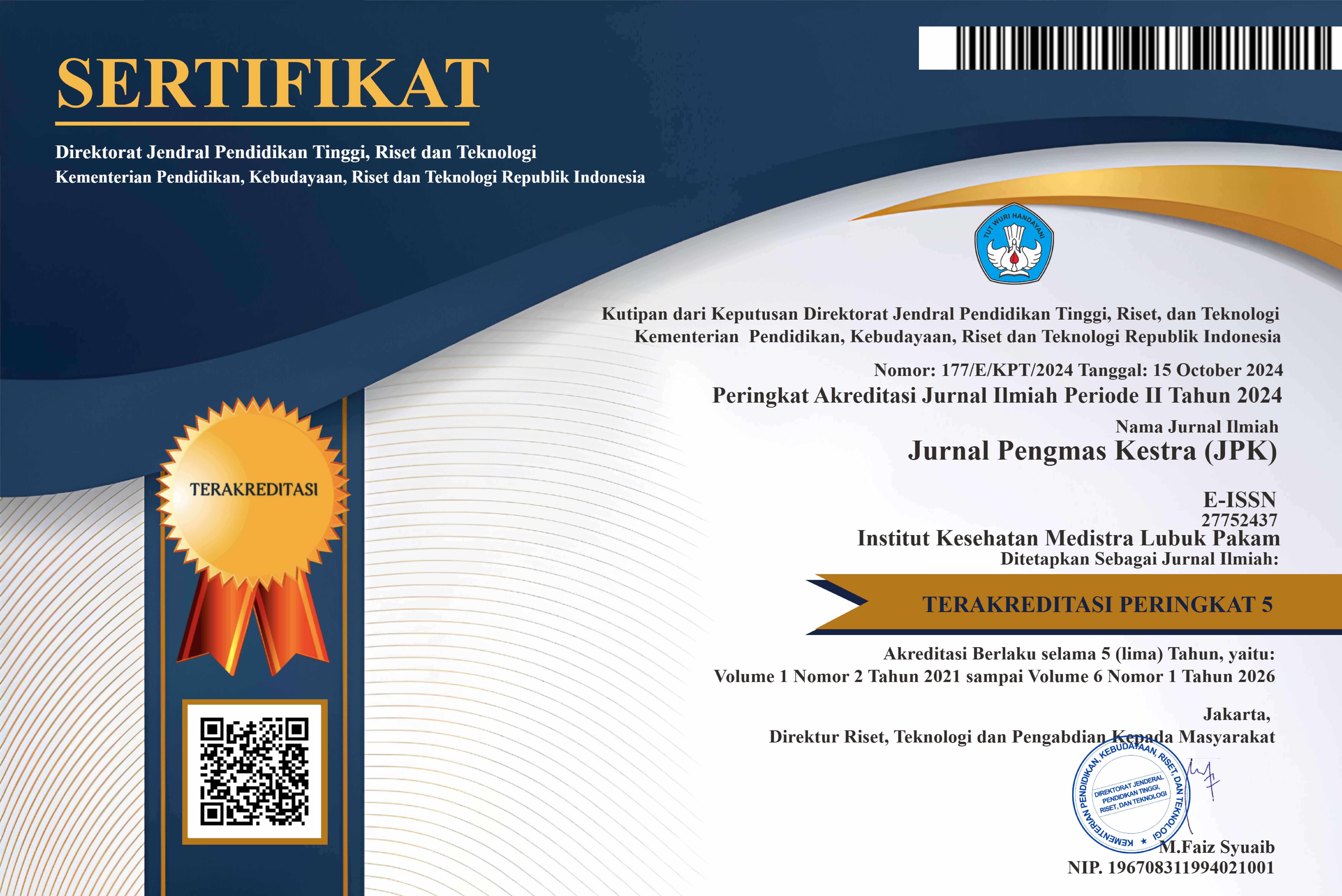SOSIALISASI PENGGUNAAN ANTIBIOTIK CEFTRIAXONE PADA PASIEN DEMAM TYFOID ANAK DI INSTALASI RAWAT INAP RSUD DELI SERDANG
DOI:
https://doi.org/10.35451/jpk.v1i1.725Keywords:
Quality of Antibiotic Use, Child Typhoid Fever, Ceftriaxone.Abstract
Typhoid fever is a systemic infection caused by the salmonella thypi bacteria which attacks the small intestine with fever for 1 week or more accompanied by disturbances in the digestive tract. This disease is endemic and is a community disease that is transmitted through food and drink contaminated with bacteria. Typhoid fever can be treated using antibiotics, giving antibiotics especially in children and infants must consider the side effects on body systems and organ function that are still not perfect. The purpose of this study was to determine the use of ceftriaxone antibiotics based on the right indication, appropriate patient, appropriate medication, proper dosage, timely administration of the drug and the right way of giving antibiotics in the inpatient installation of the Deli Serdang Regional General Hospital in 2019.
This study used retrospective data and was analyzed descriptively by purposive sampling method. Data used by pediatric patients (2-12 years). Data according to the inclusion characteristics of 43 cases were evaluated for their quality based on the right indication, appropriate patient, appropriate medication, proper dosage, the right time of administration and the right way of administration.
The results of this study indicate that the percentage of the quality of antibiotic use includes 43 (100%) right indications, 43 (100%) right patients, 43 (100%) right drugs, 30 (73%) right doses, 42 right time of administration ( 97.67%) and the right way of giving was 43 (100%).
Downloads
Published
Issue
Section
License
Copyright in each article is the property of the Author.




















